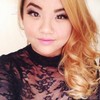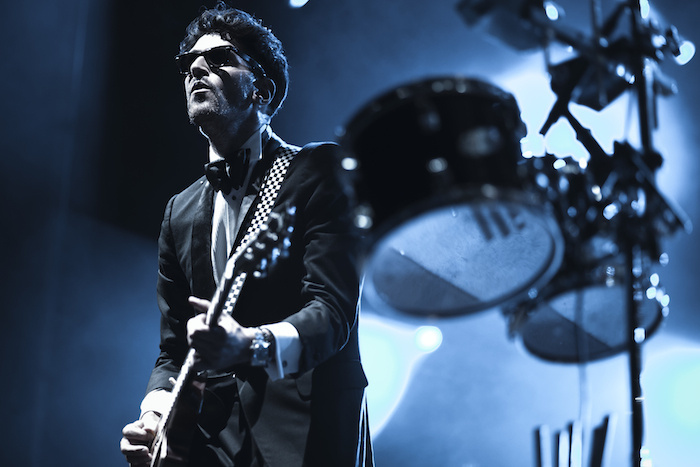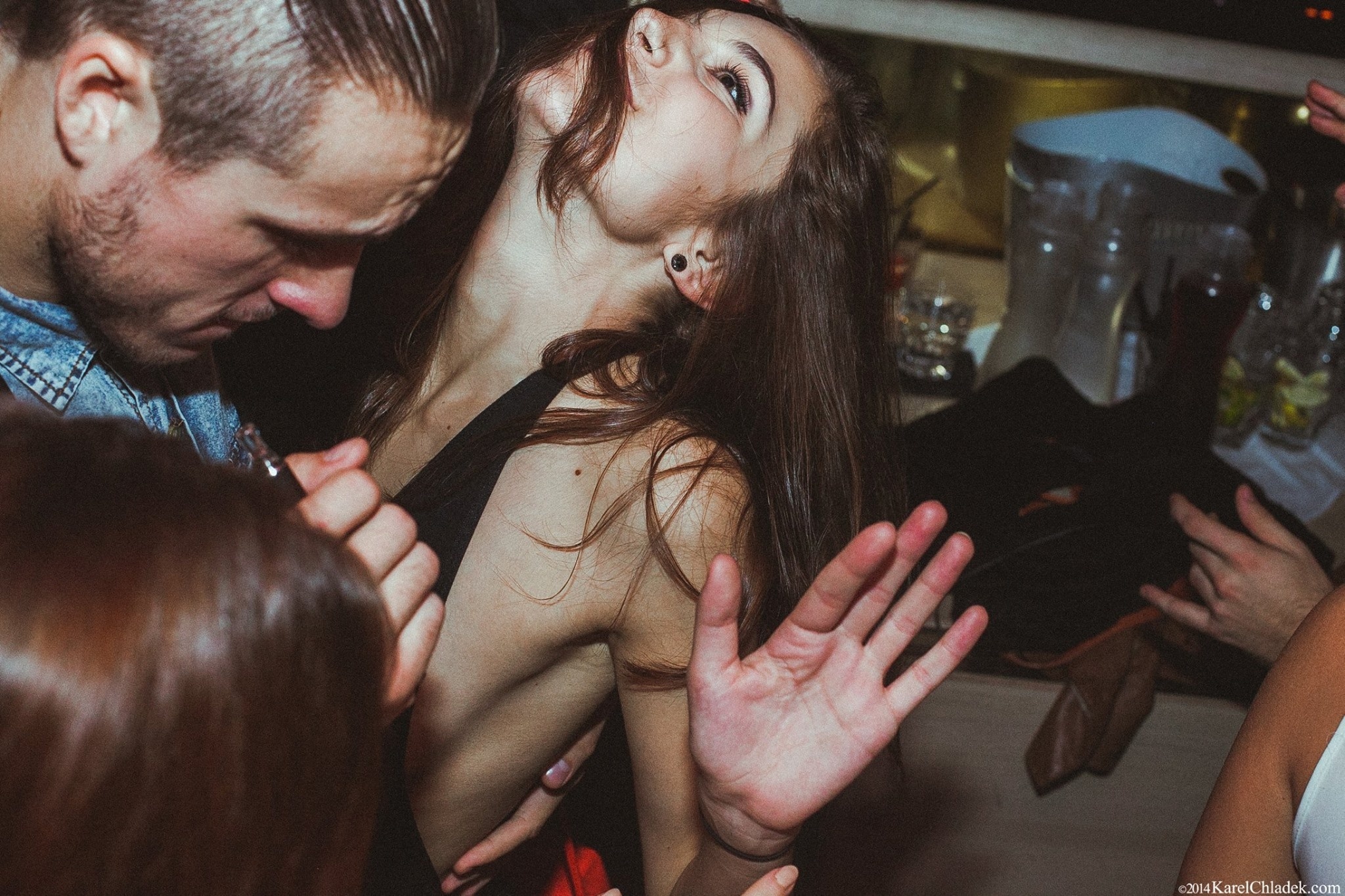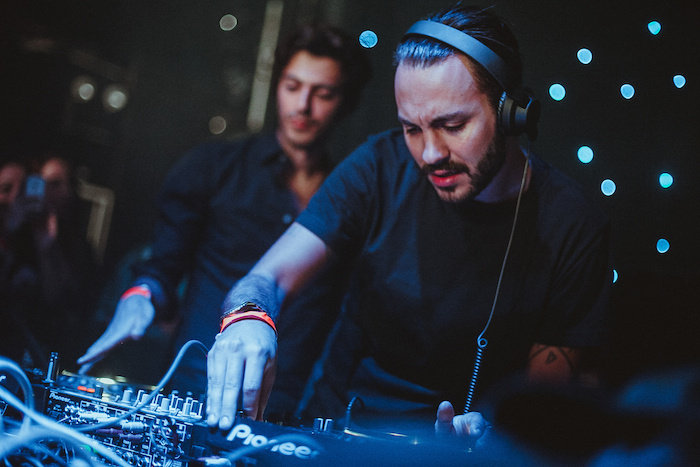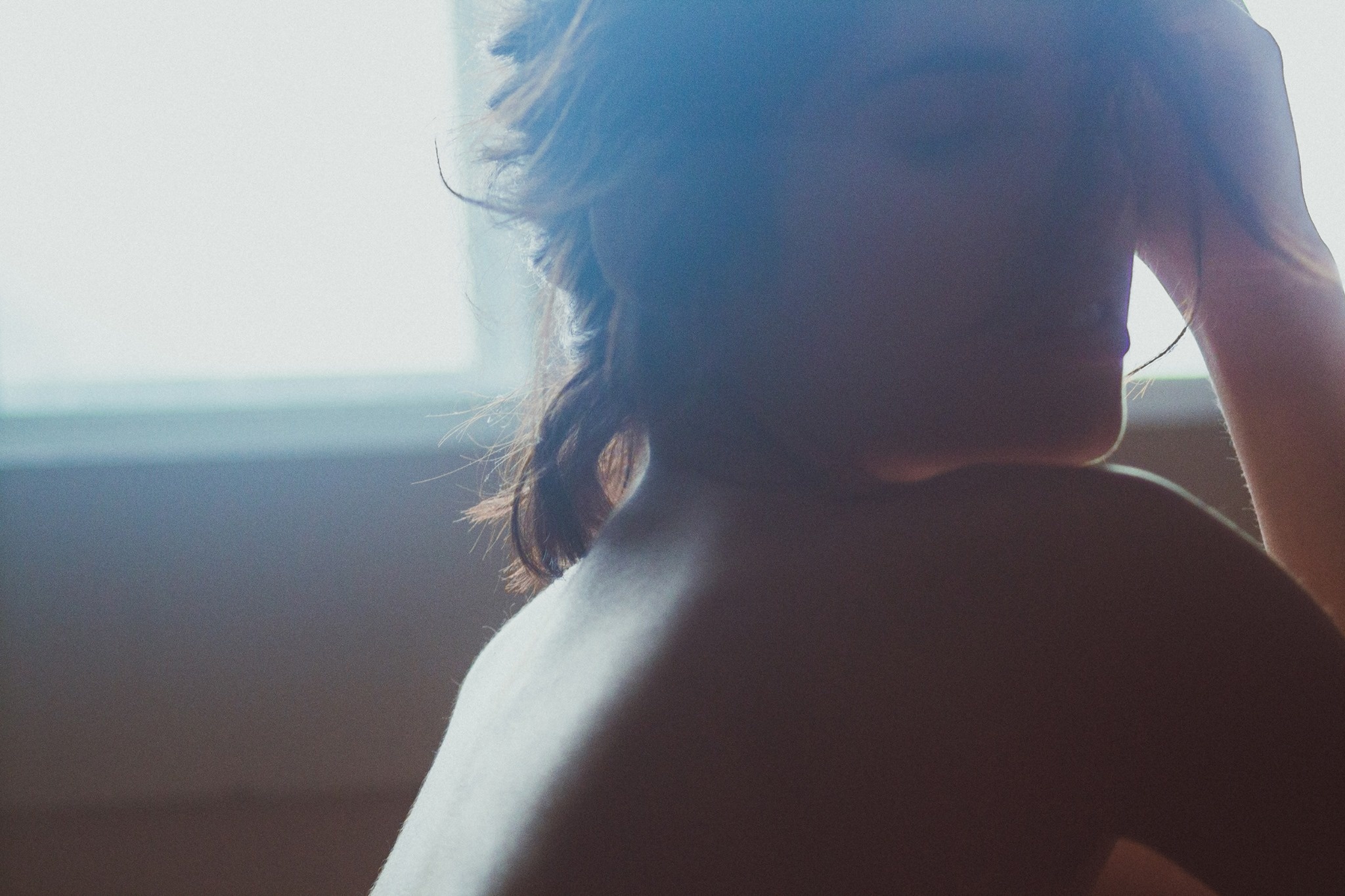Art has brought us landscapes, seascapes and cityscapes, but our generation has seen a new environment flourish: the Clubscape. Our Clubscape series aims to provide you a behind-the-scenes perspective on how rave culture is experienced, captured and illuminated by electronic music's best photographers.
Advertisement
Karel: I was on the sub-shore of Montreal so I used to drive a lot, which is why I started taking photos of cars. I've only been taking photos since 2008. I stopped school in 2010 because I was doing a three-year technical program in photography, but I stopped that halfway through because I was already doing what I wanted to be doing at that time. School can only do so much for the creative field. Teachers were getting mad at me because I was linking my personal work with my school work and they wanted to me to just do school work. I didn't want to do just that because I always wanted to be productive from my own side. Teachers were actually making me fail, so I wasn't going to restart a whole year to start classes again so that I can pass them. It doesn't change anything for my work.How did you eventually get into nightlife photography?
In the beginning I didn't know that I wanted to take pictures, but I knew a bit about photoshop. I knew that I wanted to get into that domain, but I didn't know I was going to take photography so seriously. I merged my interests. The music I was already listening to was electro, banger stuff, and that was the music I was even trying to make at that time. The electro scene was one of my interests, especially the hard, dirty stuff that people no longer really listen to. I wanted to go to those shows, the I Love Neon shows. I had a camera that my father had bought me from a friend of his. If he hadn't done that for me, I don't know what I'd be doing. It's kind of freaky to think about it. I realized then that I could merge my artsy side with electro music when I had started going to these shows.
Advertisement
I was doing everything for free in the beginning and I think that's the best way to go. I was doing it for myself. I wanted to go to these shows and I was just happy to be there. I was really shy and wasn't much of a dancer then either. I started standing back and enjoying the show a different way. That's maybe why I shoot the way I shoot… pretty secretly and very candid. People don't know I'm there. It took almost a year before they gave me like fifty bucks for a show.Your photography style is very specific to Montrealers. A kind of still life, if I could describe it. How did you develop this style? What was the inspiration?
It's all about being there at the right time. I had no control over this, but I wanted to do it. As for the inspiration, there were a couple of LA photographers that I liked. They were doing very wide angle shots, impressive shots with textures and colours. I've always had a thing for crazy colours or faded images. Even before Instagram, I always wanted to have that natural filter. I wanted a consistency in the albums that I had; a certain kind of style.
That's just life. I usually try to take it as a compliment and I do see the respect, they're all good people. I'm not sure they're all doing it for the right reasons but they're all very nice and respectful. I still do my thing and that's what's important, I'm not changing for them. Sometimes they're getting shots that I'm like 'woah, shit, that could have been mine.' They're really getting that hang of it.
Advertisement
I didn't know of the guys before. When I met them, they were playing shows as Black Tiger Sex Machine, but it was their disco funky side and not the tiger mask thing yet. They were just three DJs, playing funky house, making people dance, playing in local clubs like Velvet. They asked me to shoot randomly and they saw I was doing videos for Neon too at that time. The first show I shot they loved and it didn't take long before they wanted me to come every time. They became my friends quickly.How did you get into videography?
I started with photography. Things like the BTSM videos were self-taught and a second focus. Everything is self-taught, really. For the video thing, I didn't think it was that complicated. I don't necessarily love the process of video making, personally. I think there's more responsibilities and more organization for videos, so I try to touch it a little less. But I think it's important to have one more part of within my skills. As a photographer nowadays, it's almost natural to do video—maybe not editing, but capturing for sure.When you're out at shows, do you have time to take in the environment?
I do observe the environment at first. The basic DJ pictures, the kind of ones I at least need to have, I try to get those in the beginning [of the night]. Even the whole crowd and space picture. Then, I wait. But I wait in the right places. I wait next to the DJ in the front row, or in the back rows… I wait until reactions happen. I wait until people actually have fun. I won't make them have fun…it's when people really do have fun that shows in the pictures. I usually get a quarter of my pictures in the first two hours of the show, and the rest happens in the last hour.
Advertisement
There's almost a little too much fun going on for me. I really enjoy working for a shot, trying to figure out a picture by where they are, not with those who are waiting for one. They don't have to be the prettiest or whatever, it's just stuff that's happening. But there is so much stuff happening at festivals that I feel like I'm missing out on a lot of things. I prefer smaller spaces in that aspect. But I know I can't cover everything—no one can. It's not like it's only me that's thinking that, so I did my best. The photos aren't all the same kind of pictures. That's how I would do a festival if I ever do one again, I think it will happen again.Do you have any other projects going on right now?
I'm still following the Black Tiger guys. I think they're going to be going on tour fairly soon again. They may do a European tour after that or an American one, but I'll probably be following them for that. I'm still making music under the name Karluv Klub and releasing music on this local label, Kannibalen Records.
Advertisement
